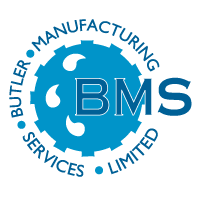Can you explain how BMS use parallel (lamellae) plates for sewage settlement?
Customer Question:
Can you explain how BMS uses parallel (lamellae) plates for sewage settlement?
Overview of Lamellae Plate Settlers
Lamellae plates are widely used in potable water treatment and have been adapted by BMS for sewage settlement to enhance efficiency and compactness. These plates increase the effective surface area available for settlement, significantly improving the separation of solids from the liquid in sewage.
Key Principles of Settlement
Upward Flow Velocity:
The upward flow velocity is critical for achieving effective settlement. It is calculated as:
Flow (m³/hr)÷Surface Area (m²)\text{Flow (m³/hr)} \div \text{Surface Area (m²)}Flow (m³/hr)÷Surface Area (m²)To achieve good settlement, the upward flow velocity must be 0.9 m/hr or better.
Example:
For a flow of 10 m³/hr, the surface area required to achieve 0.9 m/hr upward flow velocity would be:
10 m³/hr÷0.9 m/hr=11.1 m²10 \, \text{m³/hr} \div 0.9 \, \text{m/hr} = 11.1 \, \text{m²}10m³/hr÷0.9m/hr=11.1m²
BMS Implementation of Lamellae Plates
Compact Design:
Parallel lamellae plates dramatically increase the effective surface area within a compact volume, reducing the physical space required for settlement.Collaboration with Experts:
BMS worked with Dr. Michael Rodgers from the University of Galway to adapt this technology for sewage treatment in the development of the BMS Blivet.
Lamellae Plate Features in the BMS Blivet
Sloping Design:
Plates are set at a 60° slope to optimise settlement.
Spacing:
Primary Settlement Zone: Plates spaced at 50 mm intervals.
Final Settlement Zone: Plates spaced at 25 mm intervals for finer settlement.
Efficiency:
Lamellae plates allow the required upward flow velocity of 0.9 m/hr to be achieved in only 25% of the volume needed for conventional settlement tanks.
This contributes significantly to the compact design of the BMS Blivet, making it the most compact all-in-one sewage treatment system available.
Advantages of Lamellae Plates in Sewage Settlement
Compactness:
Enables the reduction of settlement tank volume by approximately 75%.
Increased Efficiency:
Maximises surface area for settlement within a confined space.
Optimised Flow:
Maintains the desired upward flow velocity for effective solid-liquid separation.
Versatility:
Integrated into both Primary Settlement and Final Settlement zones of the Blivet, ensuring thorough treatment.
For further details on lamellae plate settlers or the BMS Blivet, please contact BMS. Our compact and efficient systems are designed to provide top-tier sewage treatment in a range of applications.
500 PE Lamellae Plate Final Settlement Tank in BMS Blivet Package Sewage Treatment System
About BMS
BMS is a quality manufacturer of package products for wastewater and stormwater treatment:
Established: 1986
Global Reach: Exported to over 50 countries.
Family Business: A third-generation company with deep expertise.
BMS Product Range
BMS provides a wide array of surface water and wastewater treatment products, including:
View the full product catalogue here
Additional Services by BMS
Free Design Service: For sewage treatment, pump stations, and surface water management.
Operation and Maintenance: Full services for existing installations, including repair, advice, and testing.
Free CPD Presentations: Available for sewage treatment and surface water management, delivered at your location.
We would be delighted to discuss any requirements you might have, and we are available to meet you at your convenience. Contact us today.
© Butler Manufacturing Services 2024.
